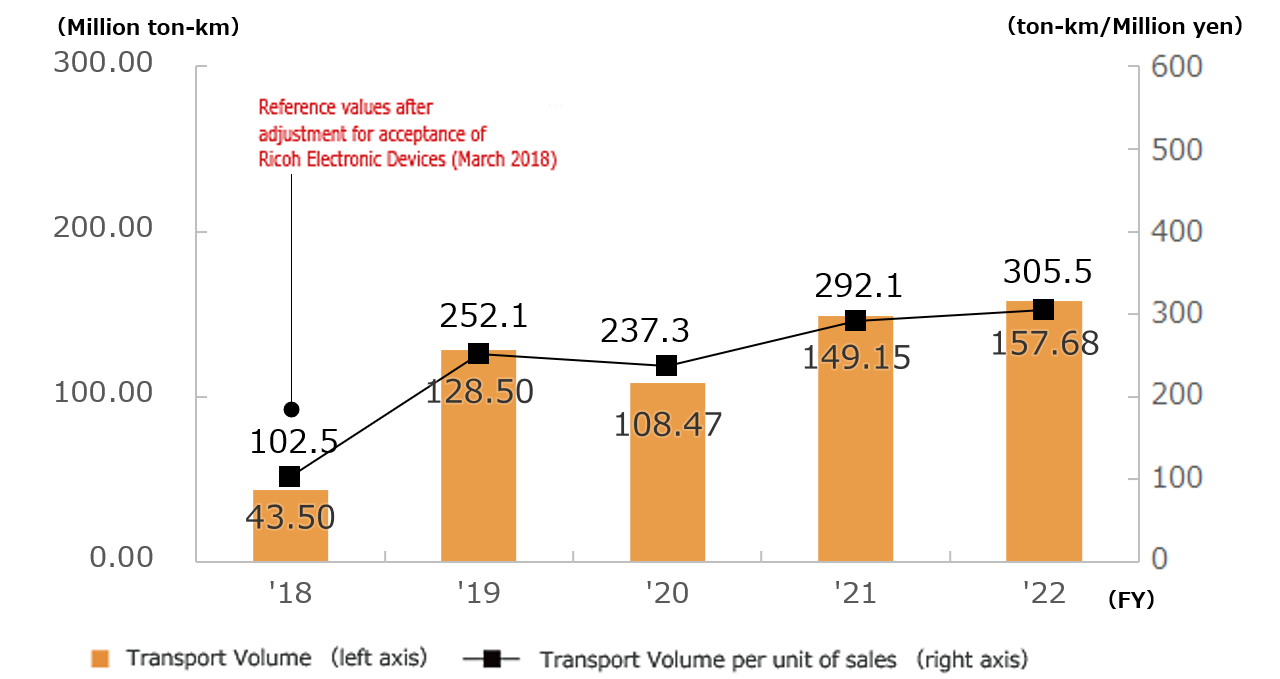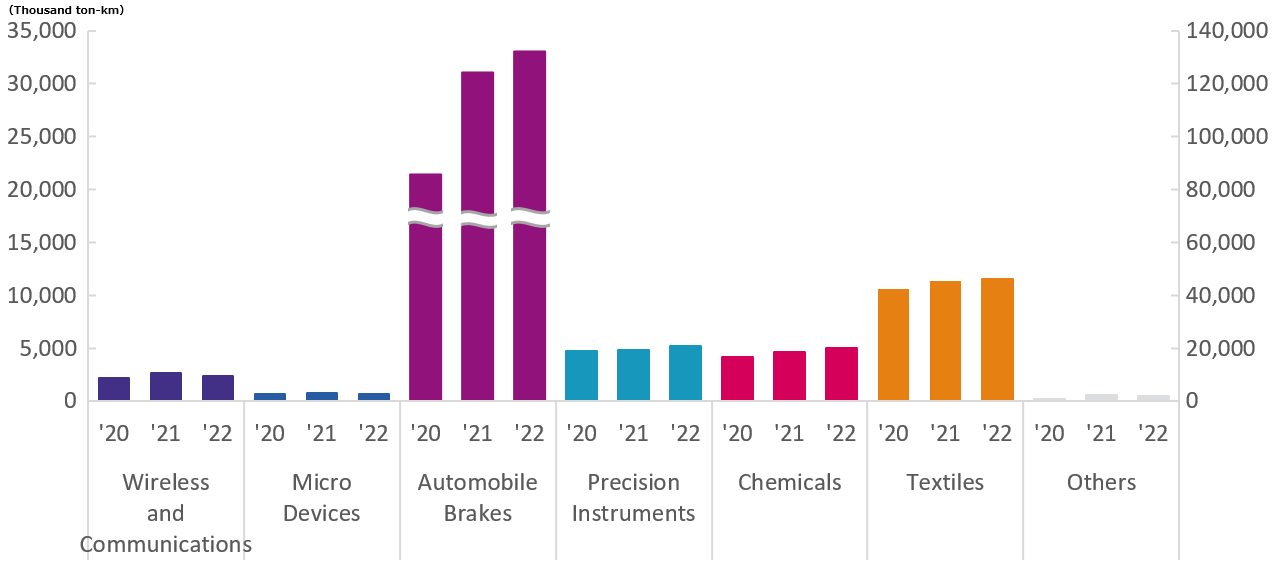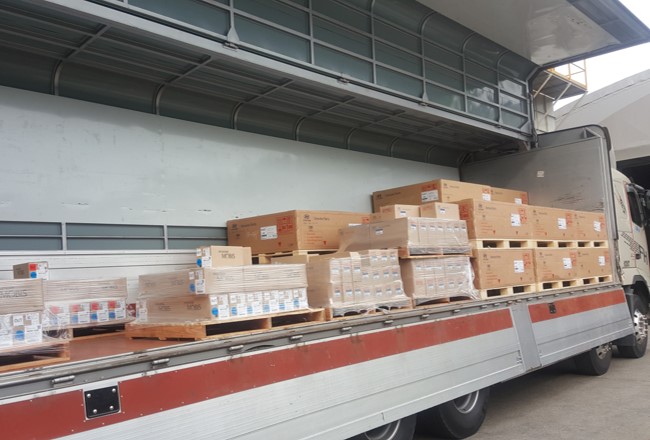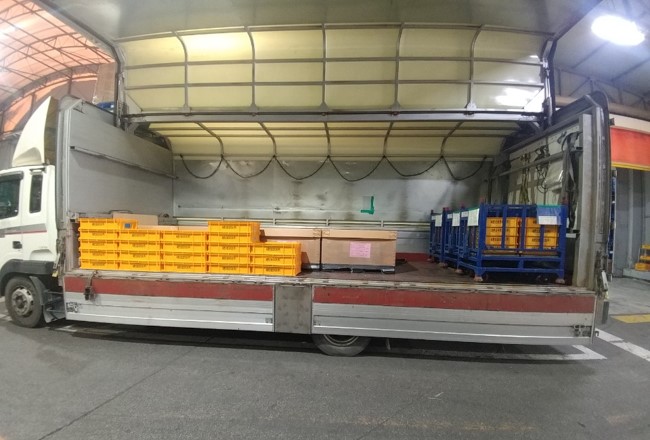Reduction of Transport Volume
Basic Concept
The Nisshinbo Group's Business Conduct Guidelines include Awareness and Concern towards its environmental impact. The Group promotes activities to reduce the transportation volume and faithfully realizes a safe and secure society for all people. The Group manages key performance indicators (KPIs) as part of systematic measures to achieve its environmental targets regarding reductions of emissions of greenhouse gases*.The Group is striving to reduce greenhouse gas emissions by reducing transportation volume through improved loading efficiency and shorter delivery distances.
* Greenhouse gas emissions are targeted by Scope 1+Scope 2
Please refer to "Promotion System" in "Environmental Activities" for the promotion system.
Specific Initiatives of The Nisshinbo Group
Transport Volume
The Nisshinbo Group's freight transport volume totaled 157.68 million ton-kilometers (ton-km), up 6% year-on-year (YoY). Freight transport volume per unit of sales was 305.5 ton-km per million yen, up 5% YoY. The increase from last year was mainly due to the recovery in the transportation volume at the Chinese bases in the Automobile Brakes and Precision Instruments business.
Trends in Transport Volume and Transport Volume per Unit of Sales

The Automobile Brakes business accounted for 84% of overall transport volume.
Trends in Transport Volume by Business

Specific Activities of the Group Companies
Improving the Efficiency of Logistics Operations
JRC Logistics Service Co., Ltd., has been working to improve the efficiency of logistics operations at Japan Radio Co., Ltd., and affiliated companies, since its establishment in 2020.
The company is eliminating waste by visualizing delivery plans (effective use of charter services and return services), improving load rates by optimizing vehicle dispatch combinations, and shortening transportation distances by concentrating cargo at large bases and dispersing it from there to each base. By incorporating such initiatives into some of the transportation operations, the company is promoting more efficient logistics operations.
Compared to the conventional transportation of products, in which products were directly sent from each distribution base to each delivery destination by chartered delivery service, the introduction of efficient transportation methods in FY2022 enabled the company to reduce CO2 emissions by 49 t-CO2 compared to the value calculated using the conventional transportation method based on the CO2 emissions calculation by All Japan Railway-Freight Forwarders Association.
Reduction of Transportation Costs Via Milk-run Logistics Operation
Saeron Automotive Corporation in the Republic of Korea introduced the milk-run method to increase the load rate of logistics vehicles as part of its cost reduction activities in FY2018.
The company reviewed the criteria for the guidelines for vehicle allocation by vehicle tonnage and by delivery pallet and was able to increase the load ratio to over 95%. In addition, the company established logistics using the milk-run method for each region by simulating and selecting transit points for the vehicle's goods flow lines.
In the past, there were delivery destinations that could not be boarded if another company's products were in the same vehicle, and since a vehicle was operated for each delivery destination, the load rate decreased and logistics costs increased, but the milk-run method reduced logistics costs by 69 million won year-on-year.


Reducing Greenhouse Gas Emissions by Changing Import Routes for Chemicals
Nisshinbo Textile Changzhou Co., Ltd., in China imports the major chemicals used in processing from Japan, and when importing, the chemicals are cleared by land at Shanghai Port and transported by truck overland (approximately 200 km) to the company. The company has confirmed that there is a regular cargo ship (one service/week) from Japan to Changzhou Port, which is close to the company, and that customs clearance for all but hazardous chemicals is also possible at Changzhou Port, so the company changed the landing port.
From the second half of 2022, the route was changed to a truck route (approx. 5 km) overland with customs clearance at Changzhou Port. As a result, the distance of overland transportation per shipment was shortened by about 195 km, resulting in a 78% reduction in greenhouse gas emissions from transportation compared to the same period of the previous year.
Results for the second half of 2021 of Shanghai Port Route: 11,220 ton-km, 1.67 t-CO2
Results for the second half of 2022 of Changzhou Port Route: 2,471 ton-km, 0.37 t-CO2